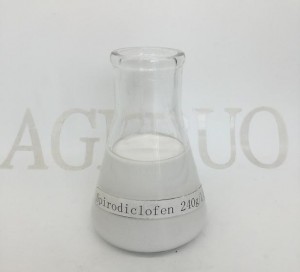First of all, let’s confirm the types of mites. There are basically three types of mites, namely red spiders, two-spotted spider mites and tea yellow mites, and two-spotted spider mites can also be called white spiders.
1. Reasons why red spiders are difficult to control
Most growers do not have the concept of prevention in advance when preventing and controlling diseases and insect pests. But in fact, they don’t know that when the field has really seen the harm of mites, it has already had an impact on the quality and yield of crops, and then taking other measures to remedy, the effect is not as great as prevention in advance, and the mites and Other pests are also different, and it is more difficult to control after the pests occur.
(1)The base of insect sources is large. Red spiders, two-spotted spider mites and tea yellow mites have strong adaptability and short growth and reproduction cycles. They can reproduce 10-20 generations per year. Each female adult can lay about 100 eggs each time. The rapid incubation after temperature and humidity results in a particularly large number of insect sources in the field, which increases the difficulty of control.
(2) Incomplete prevention and treatment. Mites on vegetables are generally small in size and like to survive on the back of leaves, and there are many leaves that fold. It is widely distributed in farmland, such as litter, weeds, surface or branches and other relatively hidden places, which increases the difficulty of control. Moreover, due to their small size and light weight, mites are easy to move under the action of wind, which will also increase the difficulty of control.
(3) Unreasonable prevention and control agents. Many people’s understanding of mites is still based on the concept of red spiders, and they think that they can be cured as long as they take abamectin. In fact, the use of abamectin to control red spiders has been used for many years. Although some resistance has been developed, the control effect on red spiders is still relatively good. However, the control effect of the two-spotted spider mites and the yellow tea mites is greatly reduced, so in many cases, it is an important reason for the unsatisfactory pest control effect due to insufficient understanding.
(4) The way of drug use is unreasonable. A lot of growers spray a lot, but I don’t think a lot of people do it. When controlling mites in the field, many people are still lazy and afraid of the back sprayer, so they choose the method of rapid spraying. It is very common to spray one mu of land with a bucket of water. Such spraying method is very uneven and unreasonable. The control effect is uneven.
(5) Prevention and control is not timely. Since many growers are generally older, their eyesight will be affected. However, the mites are relatively small, and the eyes of many growers are basically invisible or unclear, so that the mites are not controlled in time when they first appear, and the mites multiply rapidly, and it is easy to have disordered generations, which increases the difficulty of control and eventually leads to Field eruption.
2. Living habits and characteristics
Spider mites, two-spotted spider mites and tea yellow mites generally go through four stages from egg to adult, namely egg, nymph, larvae and adult mites. The main living habits and characteristics are as follows:
(1) Starscream:
The adult red spider mite is about 0.4-0.5mm long, and has obvious pigment spots on the tail. The general color is red or dark red, and the suitable temperature is 28-30 °C. There are about 10-13 generations every year, and each female adult mite lays eggs only once in her life, 90-100 eggs are laid each time, and the incubation cycle of eggs takes about 20-30 days, and the incubation time is mainly related to temperature and humidity. It mainly harms young leaves or young fruits, resulting in poor growth and development.
(2) Two-spotted spider mite:
Also known as white spiders, the main distinctive feature is that there are two large black spots on the left and right sides of the tail, which are symmetrically distributed. The adult mites are about 0.45mm long and can produce 10-20 generations per year. They are mostly produced on the back of leaves. The optimum temperature is 23-30°C. Due to the influence of the environment, the generation of algebra varies in different regions.
(3) Tea yellow mites:
It is as small as the tip of a needle, and is generally invisible to the naked eye. The adult mites are about 0.2mm. The vast majority of retail stores and growers have very little awareness of the yellow mites. It occurs in the largest number of generations, about 20 generations per year. It prefers a warm and humid environment. It can occur all year round in the greenhouse. The more suitable climatic conditions for growth and reproduction are 23-27°C and 80%-90% humidity. It will occur in a large area.
3. Prevention methods and programs
(1) Single formulations
At present, there are many common medicaments for preventing and killing mites in the market. The common single ingredients and contents mainly include the following:
Abamectin 5% EC: It is only used to control red spiders, and the dosage per mu is 40-50ml.
Azocyclotin 25% SC: It is mainly used to control red spiders, and the dosage per mu is 35-40ml.
Pyridaben 15% WP: mainly used to control red spiders, the dosage per mu is 20-25ml.
Propargite 73% EC: mainly used to control red spiders, the dosage per mu is 20-30ml.
Spirodiclofen 24% SC: mainly used to control red spiders, the dosage per mu is 10-15ml.
Etoxazole 20% SC: Mite egg inhibitor, used to inhibit embryonic development and sterilize female adult mites, effective for both nymphs and larvae. The amount per mu is 8-10 grams.
Bifenazate 480g/l SC: Contact acaricide, it has a good control effect on red spider mites, spider mites and tea yellow mites, and has a quick effect on nymphs, larvae and adult mites. Very good control effect. The amount per mu is 10-15 grams.
Cyenopyrafen 30% SC: a contact-killing acaricide, which has a good control effect on red spider mites, two-spotted spider mites and tea yellow mites, and has a good control effect on various mite states. The dosage per mu is 15-20ml.
Cyetpyrafen 30%SC: It does not have systemic properties, mainly rely on contact and stomach poisoning to kill mites, no resistance, and quick-acting. It is effective for red spider mites, two-spotted spider mites and tea yellow mites, but it is a special effect on red spider mites and has effects on all mites. The dosage per mu is 10-15ml.
(2) Combine Formulations
Early prevention: Before the occurrence of mites, it can be used in combination with pesticides, fungicides, foliar fertilizers, etc. It is recommended to spray etoxazole once every 15 days, and the water consumption per mu is 25-30 kg. It is recommended to mix with penetrants such as orange peel essential oil, silicone, etc., spray evenly up and down the whole plant, especially the back of leaves, branches and ground, to reduce the base number of mites eggs, and mites will basically not occur after continuous use, even if Occurrence will also be well prevented.
Mid- and late-stage control: After the occurrence of mites, it is recommended to use the following chemicals for control, which can be used alternately.
①etoxazole10% +bifenazate30% SC,
to prevent and kill red spider, spider mites and yellow tea mites, the dosage per mu is 15-20ml.
②Abamectin 2%+Spirodiclofen 25%SC
It is mainly used to control red spiders, and the usage amount per mu is 30-40ml.
③Abamectin 1%+Bifenazate19% SC
It is used to kill red spiders, two-spotted spider mites and tea yellow mites, and the usage amount per mu is 15-20ml.
Post time: Oct-14-2022







